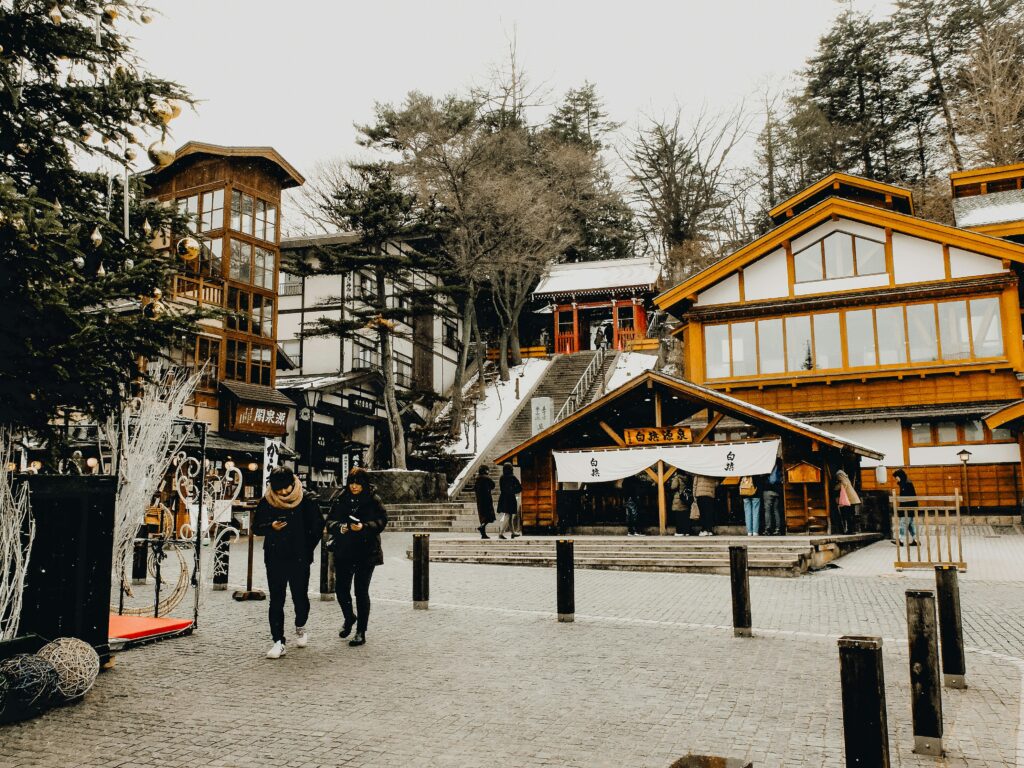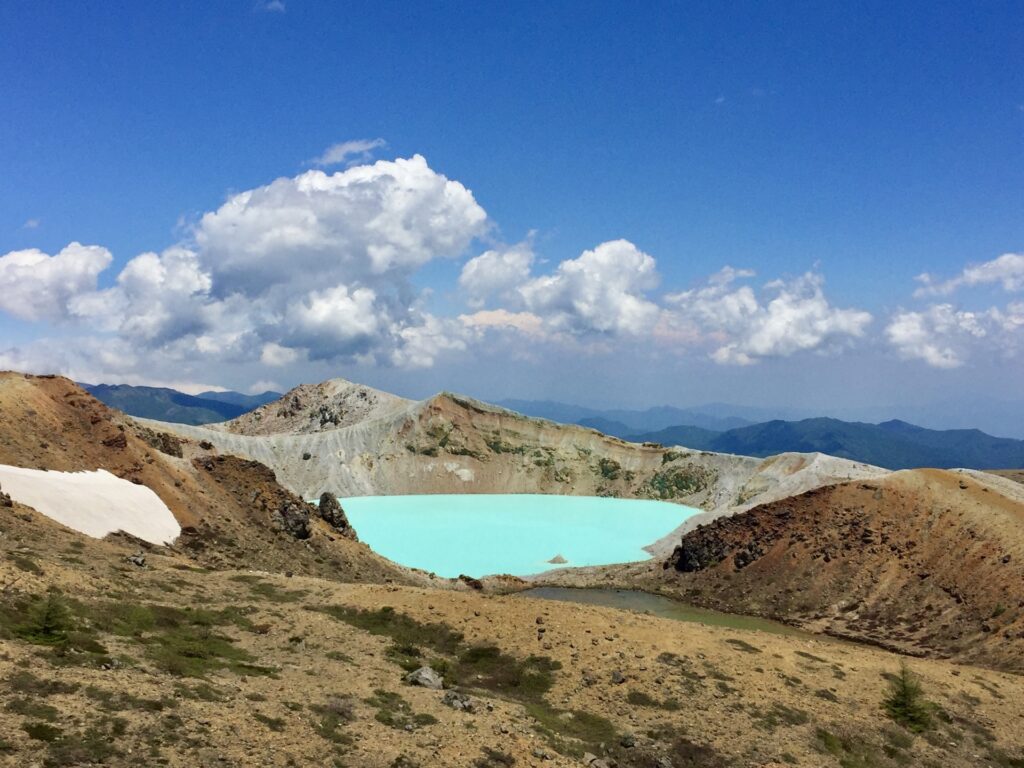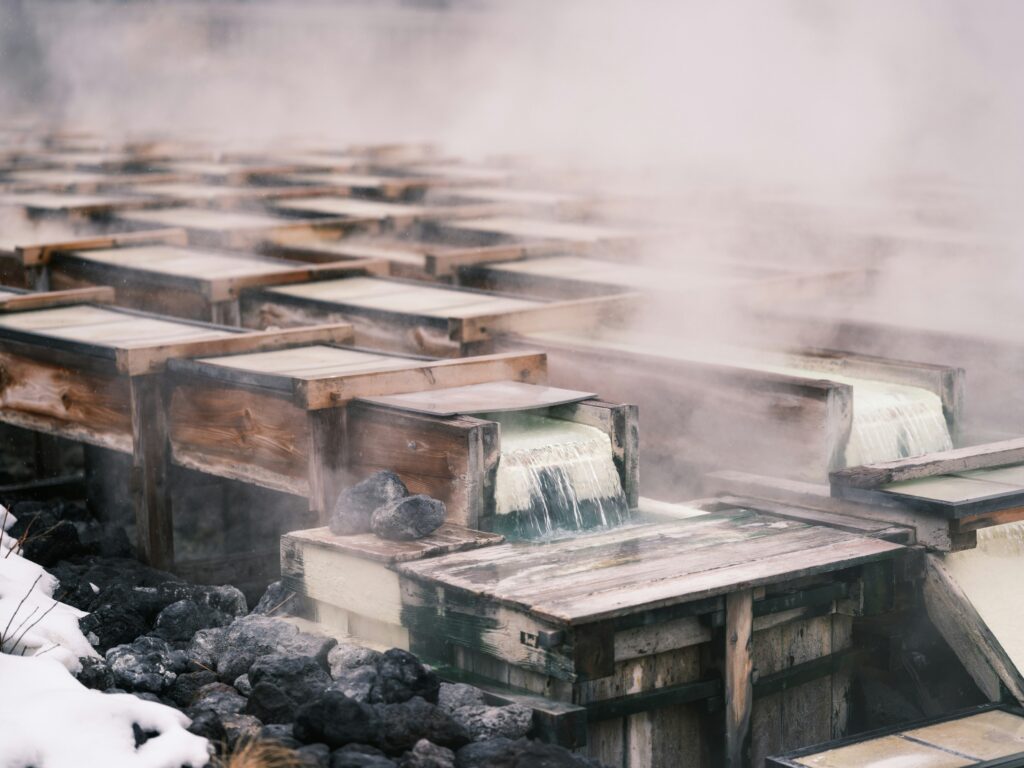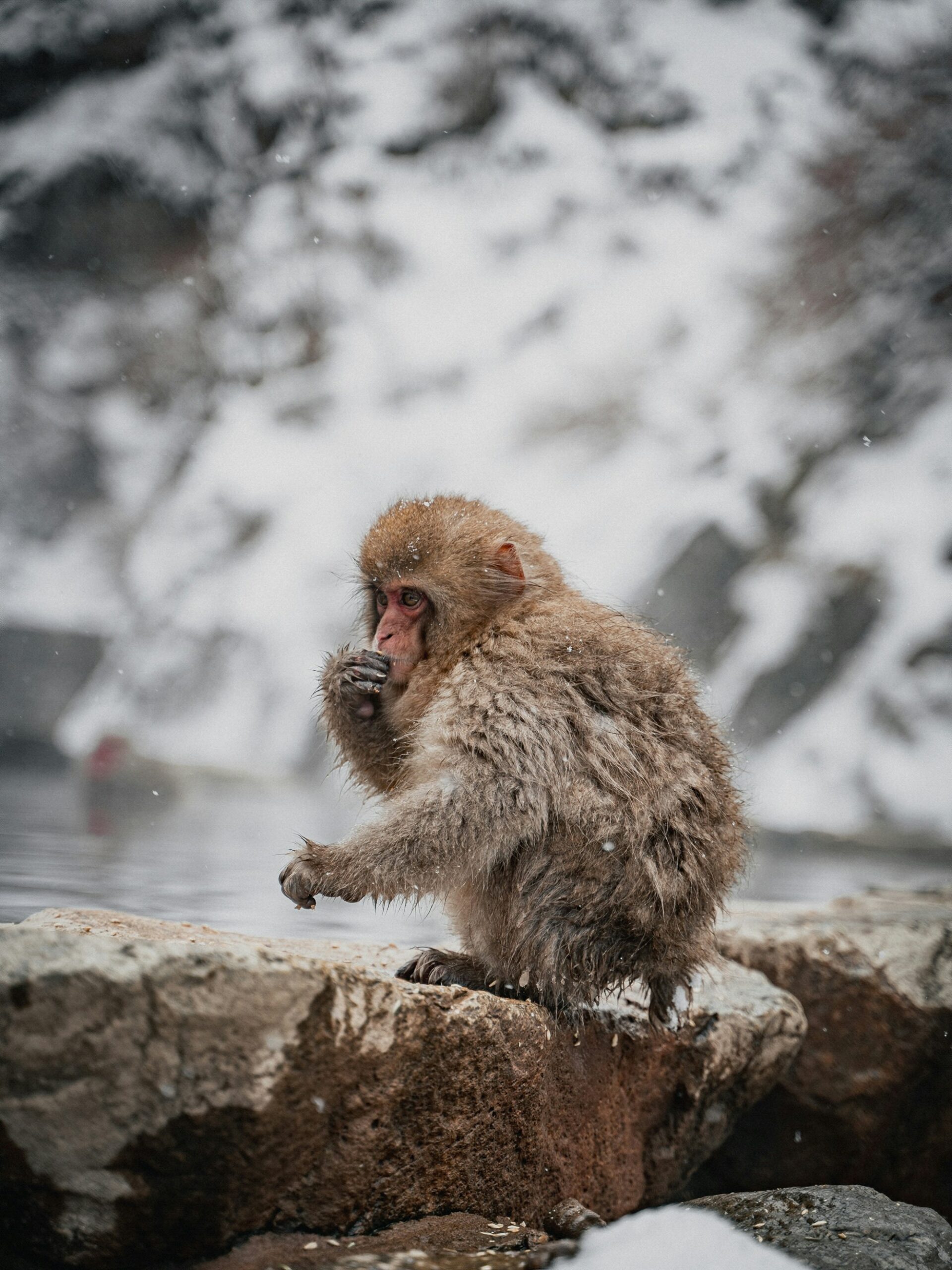It was the end of the year, and I had just wrapped up a major project in Tokyo. On a whim, I decided to visit Kusatsu Onsen. The reason was simple—I had stumbled upon a photo online. Snow blanketed a stone-paved town, where steam rose gently from the hot springs. Powdery snow settled silently on the shoulders of people walking through the mist. Something about the scene called to me.

Kusatsu Onsen is a highland hot spring town in the northwestern part of Gunma Prefecture, near the border with Nagano. It takes about three and a half hours from Tokyo by bullet train and bus. As I leaned into the collar of my heavy winter coat, I gazed out the bus window at cedar branches frozen stiff along the snow-covered mountain road.
When I arrived, the first thing that caught my eye was the Yubatake, or “hot water field”—a vast, steaming spring that felt like the very heart of the town. Emerald green water streamed through wooden channels, filling the air with warmth and a subtle scent of sulfur. It was oddly comforting, like a memory from a place I’d never been.

That evening, I wandered into a tiny restaurant tucked down a narrow alley. The building was old and wooden, with a handwritten “Open” sign hanging at the door. Inside, a sunken hearth warmed the room, and an elderly couple moved quietly behind the counter. I ordered a hot pot made with Jōshū Mochi Pork, a regional specialty from Gunma. Thick slices of sweet, tender pork were simmered with an abundance of vegetables in a rich miso-based broth—a comforting local dish that warmed me to the core.
After dinner, I went to observe a Yumomi performance—an old tradition unique to Kusatsu. The spring water is far too hot to bathe in as is, and instead of diluting it with cold water, people cool it by stirring it rhythmically with wooden paddles.

Since the Edo period, women have sung folk songs as they beat the water in time. The sound of wood on water, the singing voices, and the rising steam came together like a memory from another age. In that rhythm, I felt the quiet warmth of human presence—something I had almost forgotten.
The next morning, I took a bus toward the foot of Mount Shirane. Nearly 2,000 meters tall, it’s an active volcano with an emerald-green crater lake known as Yugama, visible only on clear days. Unfortunately, strong winds had closed the trail that day, but the mountain, silent and blanketed in snow, felt like it existed outside of time.

On the way back, I stopped at a roadside rest area where I met an elderly man. He wore a red knit cap, a thick winter coat, and carried a wooden walking stick. I was sitting on a nearby bench, eating a yakimanju—a soft, steamed bun brushed with sweet miso sauce and grilled until fragrant. It’s a traditional Gunma treat, and its warm, savory sweetness pushed back the cold in the air.
The man approached me, drawn by the scent.
“Haven’t smelled that in a long time,” he said. “My father used to make it at home all the time.”
His voice was low and gentle, his eyes crinkling with each smile. He told me he was born in Kusatsu, but had returned only after retiring from life in Tokyo.

“This town lives with the hot springs,” he said. “After the war, soldiers came here to recover. Back then, it was all about healing.”
He spoke of how the town had evolved—from a quiet spa retreat to a popular destination. But even as it modernized, the people had preserved their deep connection with the waters. “Things have gotten more convenient,” he smiled, “but the warmth of the springs hasn’t changed.”
Those words stayed with me.

Before leaving, I visited Jizo-no-Yu, one of the local public baths still used daily by residents. Tucked away from the tourist flow, it offered a glimpse into the rhythm of everyday life. I slid open the wooden door and stepped into a room where steam floated gently above the surface of the water. I sank in quietly, closed my eyes, and let the warmth wrap around me. I didn’t think of anything. I simply felt.
What Kusatsu taught me was this: the rhythm of life doesn’t have to be rushed. In the city, speed and efficiency dominate, and I had been swept along with that current. But in Kusatsu, everything moved with the calm and quiet of a natural breath. People, bodies, time itself—all were gently, mindfully connected.

As the return bus wound down the snow-covered mountains, I watched the white peaks slowly fade into the distance. I found myself thinking: maybe we all need to step out of the current from time to time. It’s in the moments when we do nothing—truly nothing—that we come closest to ourselves.
And sometimes, the key to finding that quiet truth is hidden in the soft mist of a steaming bath.
Something New Travel

